3D printing technology is an emerging manufacturing technology that began to emerge in the late 1980s. It refers to data under the control of a computer-aided design (CAD) model or computed tomography (CT) of an object. Accurate 3D stacking, a new digital forming technology that quickly creates 3D objects of any complex shape. The basic manufacturing process of 3D printing technology is to print layer by layer through the computer-controlled 3D printing system according to the principle of “layered manufacturing and layer-by-layer superpositionâ€, and finally obtain 3D products after superposition.

Figure 1 3D forming model
The application field of 3D printing technology is also expanding with the advancement of technology, including daily necessities, mechanical equipment, biomedical materials, and even living organs. In the field of biomedicine, 3D printing technology has been applied internationally. Manufacturing and surgical analysis of organ models, the manufacture of personalized tissue engineering scaffold materials and prosthetic implants, and cell or tissue printing. Using 3D printing technology, it is possible to quickly manufacture personalized tissue engineering scaffold materials based on imaging data such as CT and magnetic resonance imaging (MRI) of different patients, which not only achieves a perfect match between the material and the patient's lesion, but also facilitates cell promotion. Growth and differentiation to achieve the desired tissue repair effect.
For the field of biomedical materials, the limitations of printed materials have seriously hindered the development of 3D printing technology. 3D printing of biomedical materials is particularly difficult, considering the strength, safety, biocompatibility of materials, degradability of tissue engineering materials, etc. The biomedical materials currently available for 3D printing mainly include metals, ceramics, polymers, Bio-ink, etc., is characterized by a wide range of distribution, but few types. This review highlights recent advances in the use of metals, ceramics, polymers and other materials to prepare biomedical materials through 3D printing.
Medical inorganic non-metallic materialsInorganic non-metallic biomaterials mainly include bioceramics, bioglass, oxide and calcium phosphate ceramics and medical carbon materials.
BioceramicBioceramics have excellent properties such as high hardness, high strength, low density, high temperature resistance and corrosion resistance. They are widely used in medical bone substitutes, implants, dental and orthopedic prostheses. However, the toughness of bioceramics is not high, and the hard and brittle characteristics make it difficult to form and form. The use of 3D printing technology to prepare bioceramics has made great progress in recent years.

Figure 2 Ceramic 3D printed implant
Picture from Othworld
Bioceramics are the material of choice for medical applications due to their resistance to chemicals in the human body. Moreover, ceramic materials have proven to have excellent wear resistance compared to metals and polyethylene. The chemical stability of bioceramics means that they do not initiate any type of chemical reaction when inserted into the body due to the material's strong chemical bonds and high purity components.
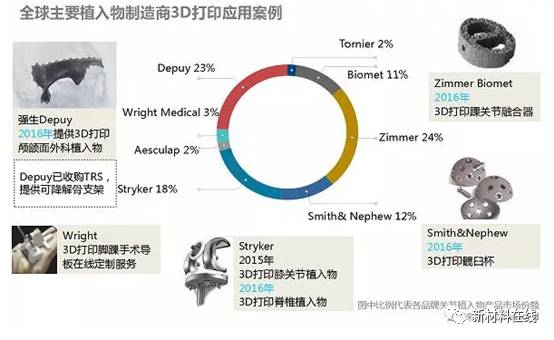
Figure 3 Ceramic 3D printed implant
Picture from Othworld
Of course, the chemical stability of bioceramics does not mean that all ceramics are non-degradable. 3D printed ceramic implants include silicon nitride, aluminum oxide, hydroxyapatite, etc., and ceramic materials such as hydroxyapatite have good biocompatibility, and will gradually be degraded and absorbed by the human body after being implanted into the body. Scientists in bioengineering and regenerative medicine have used the characteristics of such ceramic materials to develop ceramic bioscaffolds for repairing bone defects.
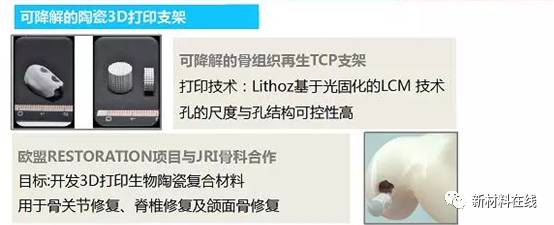
Figure 4 Degradable ceramic 3D printing bracket
Picture from Othworld
BioglassBioglass is an aggregate of silicates in which the internal molecules are randomly arranged. It mainly contains several metal ions such as sodium, calcium and phosphorus. Under certain ratios and chemical reaction conditions, a complex containing calcium hydroxyphosphate is formed. It has high biomimeticity and is the main inorganic component of biological bone tissue. Because bioglass materials have degradability and biological activity, they can induce the regeneration of bone tissue. Therefore, they are widely used as tissue engineering scaffold materials in the research field of bone tissue engineering, and have a very broad application prospect in the field of inorganic non-metal materials.
Medical metal materialMedical metal materials, also known as surgically implanted metal materials, are primarily used for the diagnosis, treatment, and replacement of tissues in the human body or to enhance their function. In the past 20 years, although metal medical materials have developed slowly relative to biomedical materials such as polymer materials, composite materials, and hybrid and derivative materials, they have high strength, good toughness and resistance to bending fatigue, and excellent processing properties. The excellent performance that is irreplaceable by many other types of medical materials is the most extensive load-bearing material for clinical applications. Especially with the development of metal 3D printing technology, metal medical materials have been more widely used, the most important applications are: fracture internal fixation plate, screws, artificial joints and root implants.
The medical metal materials used in clinical applications mainly include stainless steel, cobalt alloy, titanium alloy, shape memory alloy, precious metal and pure metal lanthanum, cerium, zirconium and the like.
1, stainless steelStainless Steel as Biomedical Material is one of the earliest developed biomedical alloys. It is characterized by easy processing and low price. Corrosion resistance and yield strength can be improved by cold working to avoid fatigue fracture. Stainless steel can be divided into austenitic stainless steel, ferritic stainless steel, martensitic stainless steel, precipitation hardening stainless steel, etc., in addition to conventional medical equipment, it can also be used to make artificial joints, fracture internal fixators, orthopedics. , artificial heart valves and other devices.
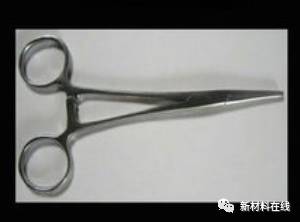
Figure 5 medical stainless steel pliers
The disadvantage of medical stainless steel is its poor stability for long-term implantation, and its density and elastic modulus are relatively large from the hard tissue of the human body, resulting in poor mechanical compatibility. Because corrosion can cause metal ions or other compounds to enter the surrounding tissues or the entire body, it can cause some adverse histological reactions in the body, such as edema, infection, tissue necrosis, etc., and the precipitation of nickel ions in stainless steel is serious. Lesion.
2, cobalt alloyCo-based Alloy as Biomedical Material is also a metal medical material commonly used in medical treatment. The corrosion resistance of medical cobalt alloy is 40 times higher than that of stainless steel. It is mainly used to make artificial hip joints, knee joints, joint nails, bone plates, bone nails and bone needles. Currently, the most widely used cobalt-chromium-aluminum alloy is cast.
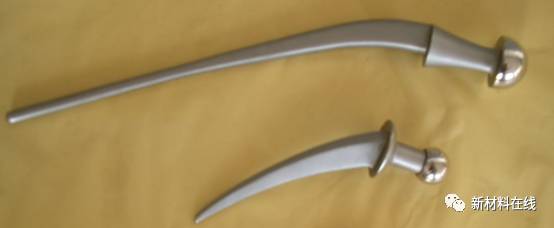
Figure 6 Cobalt-based alloy artificial joint
Image source network
Cobalt alloys remain passive in the human body, and corrosion is rare. Compared with stainless steel, the passivation film is more stable and has better corrosion resistance. From the point of view of wear resistance, it is also the best among all medical metal materials. It is generally considered that there is no obvious histological reaction after implantation in human body. However, due to the high price of cobalt alloy, and the artificial hip joint made of cobalt alloy is dissolved by Co and Ni due to metal wear and corrosion, there are biological problems such as severe sensitization, which easily cause cell and tissue necrosis in the body, resulting in patients. Pain and joint loosening and sinking are limited by application. In recent years, surface modification techniques have been used to improve the surface properties of cobalt alloys, effectively improving their clinical effects.
3. Titanium alloyTi-based-Alloy as Biomedical Material is one of the most known bioaffinity metals and one of the most promising medical materials. At present, titanium and titanium alloys are mainly used in orthopedics, especially for the repair of limbs and skulls. They are used to make various internal fixation devices, artificial joints, cranial and dura mater, artificial heart valves, teeth, gums and support rings. And crowns. Among them, the most used titanium alloy for medical applications is TC4 (Ti-6A1-4V).
The density of titanium and titanium alloy is about 4.5g/cm3, which is almost half of that of stainless steel and cobalt alloy. Its density is close to human hard tissue, and its biocompatibility, corrosion resistance and fatigue resistance are superior to stainless steel and cobalt alloy. It is currently the best metal medical material. The disadvantages of titanium and titanium alloys are lower hardness and poor wear resistance. If wear occurs, the oxide film is first destroyed, and then the worn particles corrode the product into the body tissue, especially the toxic vanadium (V) in the Ti-6A1-4V alloy can cause the implant to fail. In order to improve the wear resistance of titanium and titanium alloys, the surface of titanium and titanium alloy products can be treated by high-temperature ion amination or ion implantation to enhance the surface wear resistance.
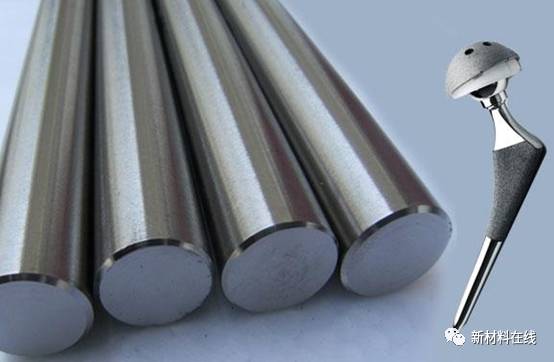
Figure 7 Medical titanium and titanium alloy
Image source network
4, shape memory alloyThe study of Shape Memory Alloy as Biomedical Material began in the 1970s and was quickly widely used. The most widely used shape memory alloys in clinical practice are nickel-titanium shape memory alloys. The medical nickel-titanium shape memory alloy has a shape memory recovery temperature of 36±2° C., which conforms to human body temperature and clinically exhibits biocompatibility comparable to that of titanium alloy. However, since the nickel-titanium memory alloy contains a large amount of nickel, if the surface is improperly treated, the nickel ions may diffuse into the surrounding tissue, causing cell and tissue necrosis. Medical shape memory alloys are mainly used in orthopedics and dentistry. The best examples of nickel-titanium memory alloy applications are self-expanding stents, especially cardiovascular stents.
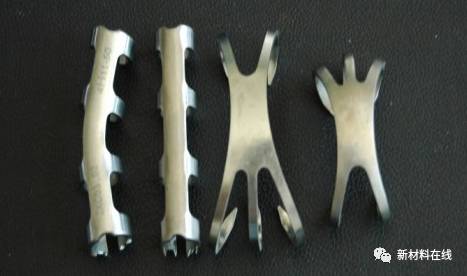
Figure 8 Medical titanium and titanium alloy
Image source network
5, precious metals and pure metals bismuth, bismuth, zirconiumMedical precious metal refers to a general term for gold, silver, platinum, and alloys thereof used as biomedical materials. Precious metals have good biocompatibility, strong resistance to oxidation and corrosion, unique physical and chemical stability, excellent processing characteristics, and no toxic or side effects on human tissues. It is used for whole tooth restoration, skull repair, implanted electrode electronic device, nerve repair device, ear vortex nerve stimulation device, diaphragm nerve stimulation device, optic nerve device and cardiac pacemaker electrode.
Niobium has good chemical stability and physiologic corrosion resistance. The oxide of niobium is not absorbed and does not exhibit toxic reaction. It can be used in combination with other metals without destroying the oxide film on its surface. In the clinic, sputum also shows good biocompatibility.钽, 铌, zirconium and titanium have very similar structure and chemical properties, and have been applied in biomedicine. They are used as bone plates, implant roots, dentures, cardiovascular stents and artificial hearts. However, in general, medical precious metals and metals such as lanthanum, cerium and zirconium are limited in their application due to their relatively high price.
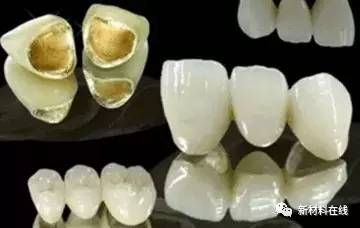
Figure 9 precious metal porcelain teeth
Image source network
Biomedical polymer materialIn recent years, biomedical polymer materials have emerged as the fastest growing biomedical materials. At present, biomedical polymer materials research has entered a new stage, and it is a hot spot to find a kind of bioactive materials with active induction and stimulation of human tissue regeneration and repair. 3D printing polymer consumables need special treatment, and also need to add adhesive or photocuring agent, and have high requirements on the curing speed and curing shrinkage rate of the material. Different printing technologies have different material requirements, but both require rapid and accurate material forming process. Whether the material can be quickly and accurately formed is directly related to the success or failure of printing. Since biomedical materials directly interact with biological systems, biomedical materials must have good biocompatibility in addition to various physical and chemical properties. The development of biomedical materials has stricter audit procedures than the development of other functional materials, so Research on 3D printed polymer materials for biomedical applications is just beginning.
1. Types of polymer raw materialsCurrently commonly used 3D printing polymer materials are polyamide, polyester, polycarbonate, polyethylene, polypropylene and ABS. There are many types of oligomers in photocuring embossing, and many of them mainly include urethane acrylate resin, epoxy acrylate resin, polyacrylic resin, and amino acryl resin.
2. Common application processAt present, 3D printing polymer materials technologies mainly include photocuring stereoscopic printing (SLA), fused deposition molding (FDM), and selective laser sintering (SLS).
Light curing stereo printing
Photocuring 3D printing (SLA) works similarly to inkjet printing. Under the control of digital signals, the liquid photosensitive resin in the working chamber of the nozzle forms droplets in an instant, and the nozzle is ejected to a specified position under pressure and then passed. The ultraviolet light cures the photosensitive resin, and after solidification, it is stacked layer by layer to obtain a formed part.
The photocurable 3D printing material is composed of a photocurable solid material and a supporting material, wherein the supporting material can be further divided into a phase change wax supporting material and a photocurable supporting material according to different curing modes thereof. Photocurable support materials, commonly known as photosensitive resins, are composed primarily of oligomers, reactive diluents (active monomers), photoinitiators, and other auxiliaries. Due to the early start of foreign countries, and 3D printers can provide experimental equipment support for the research of photosensitive resin, foreign 3D printing photosensitive resin is more mature.

Figure 10 light curing 3D printing schematic
High-molecular materials for photo-curing stereolithography preparation of biodegradable scaffold materials include photosensitive molecularly modified poly(hydroxypropyl) fumarate (PPF), poly(D,L-lactide) (PLA), poly(- Natural polymers such as esters (PCL), polycarbonates, and protein polysaccharides. In order to reduce the viscosity of the liquid resin raw material, it is also necessary to add a small molecule solvent or diluent, such as diethyl fumarate (DEF) and N-vinyl pyrrolidone (NVP), which are involved in photopolymerization, and do not participate. Polymerization of ethyl lactate, the 3D molding material obtained by this technique has a controlled pore size porosity permeability and pore distribution.
Fused deposition
Fused Deposition Molding (FDM) is a hot melt nozzle that allows the molten material to be extruded and deposited in a computer-controlled path and solidified, solidified by layer-by-layer deposition, and finally the support material is removed to obtain the desired three-dimensional product (Figure 2). ). The raw materials used in FDM technology are usually heat-shrinkable polymers, including ABS, polyamide, polyester, polycarbonate, polyethylene, polypropylene, etc. The technical features are high precision of the molded product, good surface quality, simple structure of the molding machine, no environmental pollution, etc., but the disadvantage is that the operating temperature is high.
In recent years, the use of FDM technology to prepare biomedical polymer materials has also received more and more attention, especially the preparation of biodegradable scaffold materials using aliphatic polyester as raw material, and considerable progress has been made. The properties of the material are affected by the pressure gradient melt flow temperature gradient, etc., and the composite of polyester and inorganic particles can also be used for fused deposition molding to prepare 3D scaffold materials.
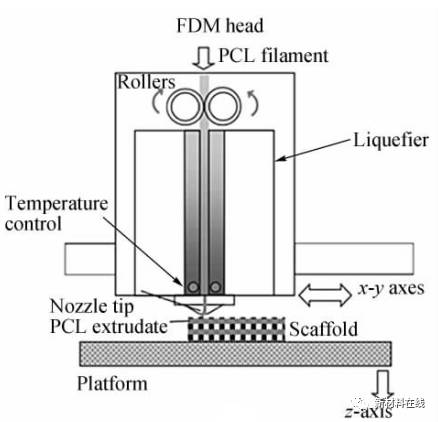
Figure 11 Products required for fused deposition molding
Selective laser sintering
Selective laser sintering (SLS) uses a laser beam to scan according to a computer-specified path to melt-bond and solidify the powder material on the workbench. When the layer is scanned, the workbench is moved to place a new powder material on the surface of the solidified layer, and the three-dimensional material is obtained through layer-by-layer scanning bonding. Different from the SLA technology, the polymerization or cross-linking reaction of the liquid resin raw material is initiated by ultraviolet light layer by layer. The SLS technology forms a three-dimensional material by melting the surface of the powder raw material by laser high temperature. The advantage is that the processing speed is fast, no need to use supporting materials, but the disadvantage is that the surface of the molded product is rough, requires post-treatment, dust and toxic gas are generated during the processing, and the high temperature may cause degradation of the polymer material, and bioactive molecules. The deformation or cell apoptosis, this technique cannot be used to prepare hydrogel scaffolds. Using biodegradable polymer as raw material and using SLS technology is also an effective way to prepare 3D medical polymer materials with external morphology and internal structure controllable.
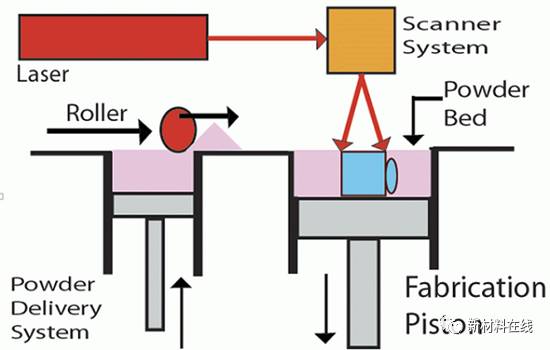
Figure 12 Schematic diagram of selective laser sintering
Biomedical polymer materials have been widely used in the field of medical devices, mainly in the fields of artificial organs, medical plastics and medical polymer materials.
Artificial organAn artificial organ refers to a material that can be implanted into the human body or that can be in contact with biological tissues or biological fluids; or materials that have the function of natural organ tissues or components, such as artificial heart valves, artificial blood vessels, artificial kidneys, artificial joints, artificial Bone, artificial tendon, etc., are generally considered to be implantable medical devices. Artificial organs are mainly divided into three types: mechanical artificial organs, semi-mechanical semi-biological artificial organs, and biological artificial organs.
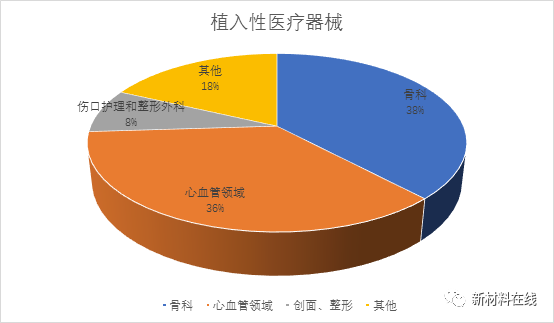
Medical plastics, mainly used in blood transfusion instruments, syringes, cardiac catheters, central venous cannula, peritoneal dialysis tubes, bladder fistulas, medical adhesives, and various medical catheters, medical membranes, wound dressing materials, and various operations. Care products, etc. Injection molding products are the largest varieties of medical plastic products. Common medical plastics include polyvinyl chloride (PVC), polyethylene (PE), polypropylene (PP), polytetrafluoroethylene (PTFE), thermoplastic polyurethane (TPU), polycarbonate (PC), polyester (PET), etc. .
The development trend of medical plastics in the future is to develop medical plastics that can withstand various disinfection methods, improve the blood compatibility and tissue compatibility of existing medical plastics, and develop new types of plastic products for treatment, diagnosis, prevention, and health care.
3. Pharmaceutical polymer materialsMedicinal polymer materials play an important role in the development and production of modern pharmaceutical preparations, and play an important role in improving the quality of medicines and developing new drug delivery systems. The application of medicinal polymer materials mainly includes two aspects: for the improvement of pharmaceutical dosage forms, as well as sustained release and targeting, in addition to the synthesis of new drugs.
Silver Flex membrane switches are the most common construction for flexible, custom membrane keypads. It is also the most popular Membrane Switch construction due to its affordability, especially when compared to bulky, costly electromechanical switch assemblies. Silver flex membranes switches feature very thin flexible layers of material, of which some layers utilize screen printed silver and carbon conductive inks, and are separated by an adhesive layer.
Silver Flex Membrane Switches,1-9 Number Membrane Switch,A-D Membrane Switch,Silver Ink Membrane Switch
Dongguan Nanhuang Industry Co., Ltd , https://www.soushine-nanhuang.com